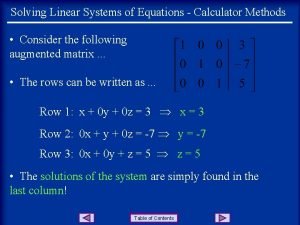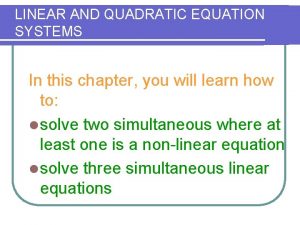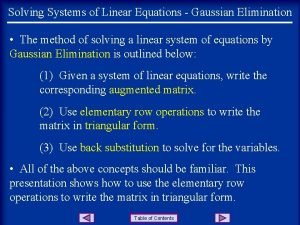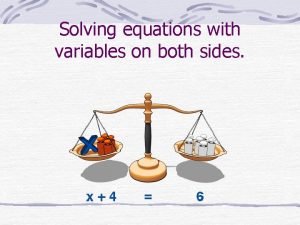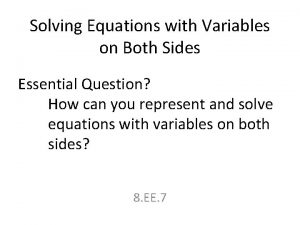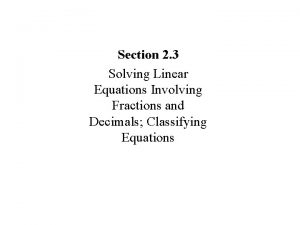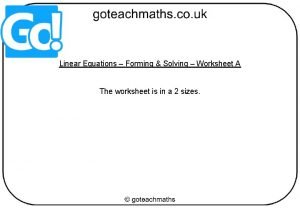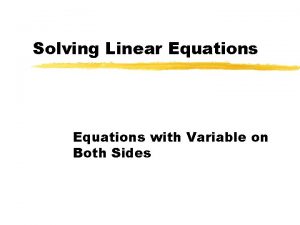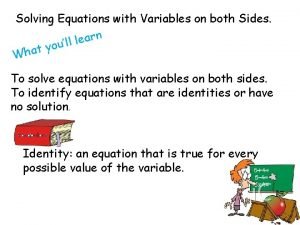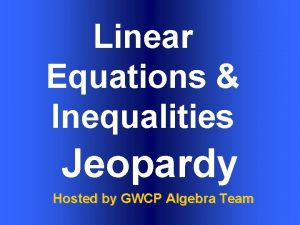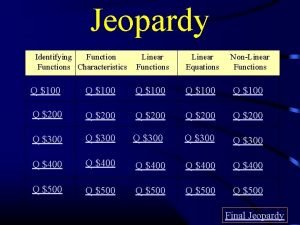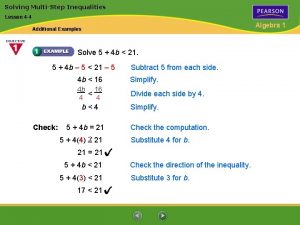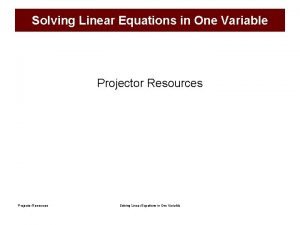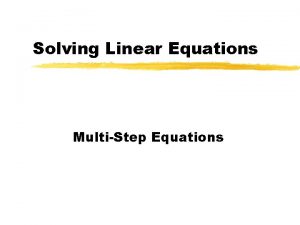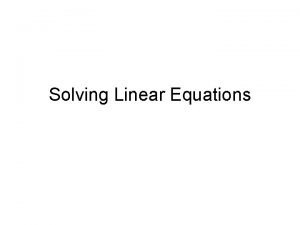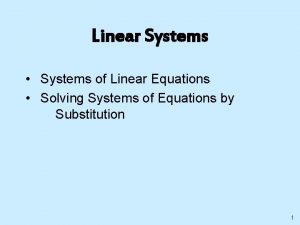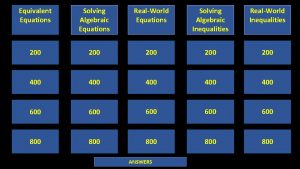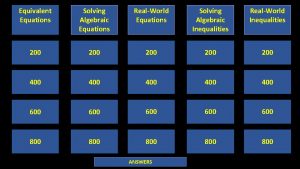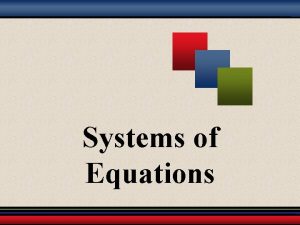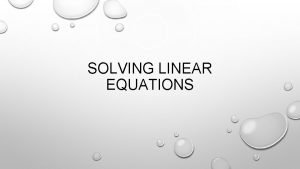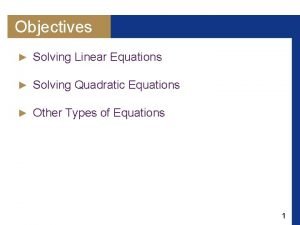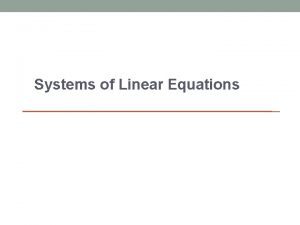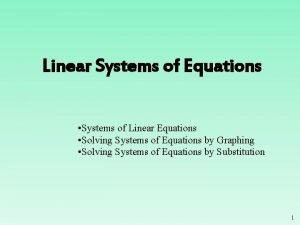3 4 Solving Systems of Linear Equations in













- Slides: 13

3. 4 Solving Systems of Linear Equations in Three Variables

This is a 3 dimensional coordinate system. Points in this space can be located by the ordered triple (x, y, z). The origin (0, 0, 0) The three axes, taken two at a time, detemine three coordinate planes that divide space into eight octants. yz-plane xy-plane

Plotting points in 3 dimensions (-5, 3, 4) Plot the ordered triple in this three-dimensional coordinate system: (-5, 3, 4) 4 3 -5

An equation in 3 variables: 3 x+2 y+4 z=12 We can sketch the graph of this equation by locating the x, y and z intercepts. (4, 0, 0) (0, 6, 0) (0, 0, 3)

Evaluating a Function of Two Variables Write the linear equation 3 x +2 y+4 z=12 as a function of x and y. 4 z=12 -3 x-2 y z=(1/4)(12 -3 x-2 y) In this form we can evaluate the function when x =1 and y = 3 ………. that is f(1, 3)=(1/4)(12 -3(1)-2(3)=3/4 This tells us that the graph off contains the point (1, 3, 3/4)

Here is a system of three linear equations in three variables: The ordered triple (2, -1, 1) is a solution to this system since it is a solution to all three equations.

The graph of a linear equation in three variables is a plane. Three planes in space can intersect in different ways. The planes could intersect in a line. intersect in a The system has single point. infinitely many The system has solutions exactly one solution The planes could have NO point of intersection. The left figure shows planes that intersect pairwise, but all 3 do not have a common point of intersection. The right figure shows parallel planes. Each system has NO solution.

The linear combination method in lesson 3. 2 can be extended to solve a system of linear equations in three variables.

Solve this system Our strategy will be to use two of the equations to eliminate one of the variables. We will then use two other equations to eliminate the same variable. Once we have two equations with two variables, we can use the technique we learned in lesson 3. 2

Solve this system Equation 1 Equation 2 2 -3 Equation 3 Multiply Eq. 2 by 2 and add it to Eq. 1. Save this result Solve this new system of linear equation in two variables. Multiply the bottom eq. by 7 and add it to the top eq. 7 x +10 z = 19 Now multiply Eq. 2 by -3 and add it to Eq. 3. Save this result. -18 z=-72 or z = 4 Substituting z=4 into either of the new equations will give x = -3……finally substituting these values into any of the original equations give y = 2. -x -4 z = -13 Our final solution is (-3, 2, 4)

Here is a system with No Solution. Watch what happens when we try to solve it. Equation 1 Equation 2 Equation 3 Add -3 times Eq 1 to Eq 2. 0=8 Since this is a false equation, you can conclude the original system of equations has no solution.

Here is a system with MANY solutions. Watch what happens when we try to solve it. Equation 1 Equation 2 Equation 3 Add Eq. 1 to Eq. 2 2 x + 2 y =4 New EQ. 1 Add Eq 2 to Eq 3 3 x +3 y =6 New EQ 2 Solving this new system of two equation by adding -3 times the first eq. to 2 times the second eq. produces the identity 0 = 0. So, the system has infinitely many solution. You could describe the solution this way: divide New Eq 1 by 2 to get x+y=2, or y= -x+2. Substituting this into the orignial Equation 1 produces z = 0. So any ordered triple of the form (x, -x+2, 0) is a solution. For example (0, 2, 0) and (2, 0, 0) are solutions.

Substitution Method Since x+y=z, substitute this for z in the first two equations Simplify Finally, solve this linear system of two equations and two variables to get x = 4 and y =8 Since z=x+y, z = 12. Our final solution is (4, 8, 12)
 System of equations calculator
System of equations calculator Linear combinations method
Linear combinations method Eliminasi matriks
Eliminasi matriks Solving linear equations with variables on both sides
Solving linear equations with variables on both sides Steps to solving equations with variables on both sides
Steps to solving equations with variables on both sides Linear equations with fractions
Linear equations with fractions Bar model equations
Bar model equations Forming and solving linear equations worksheet
Forming and solving linear equations worksheet Solving linear equations variables on both sides
Solving linear equations variables on both sides Solve it
Solve it One step equations and inequalities jeopardy
One step equations and inequalities jeopardy Solving linear equations jeopardy
Solving linear equations jeopardy Lesson 4 - solving linear equations and inequalities
Lesson 4 - solving linear equations and inequalities Solving
Solving
